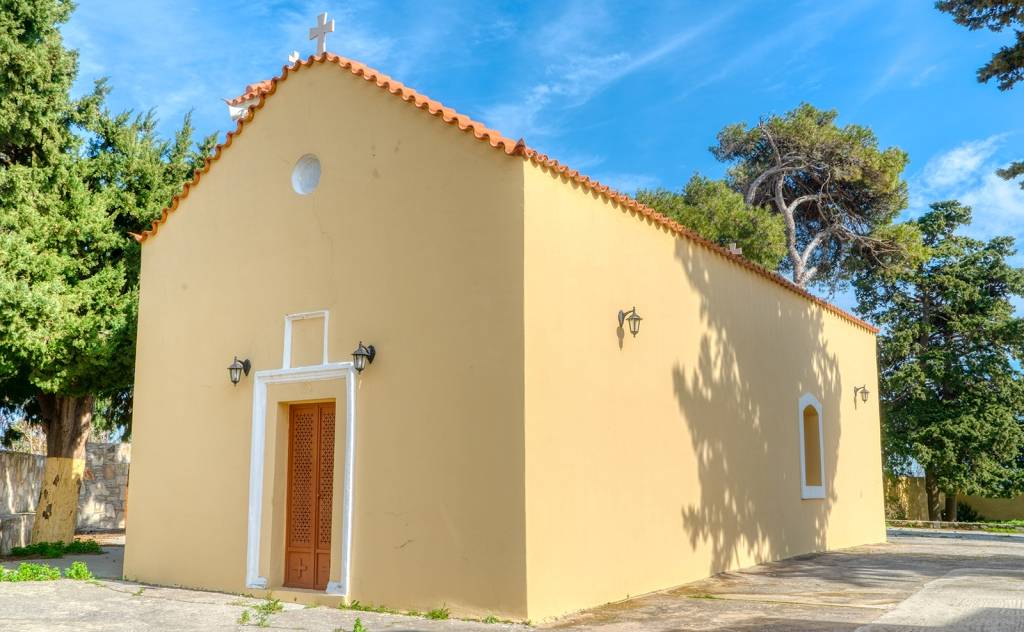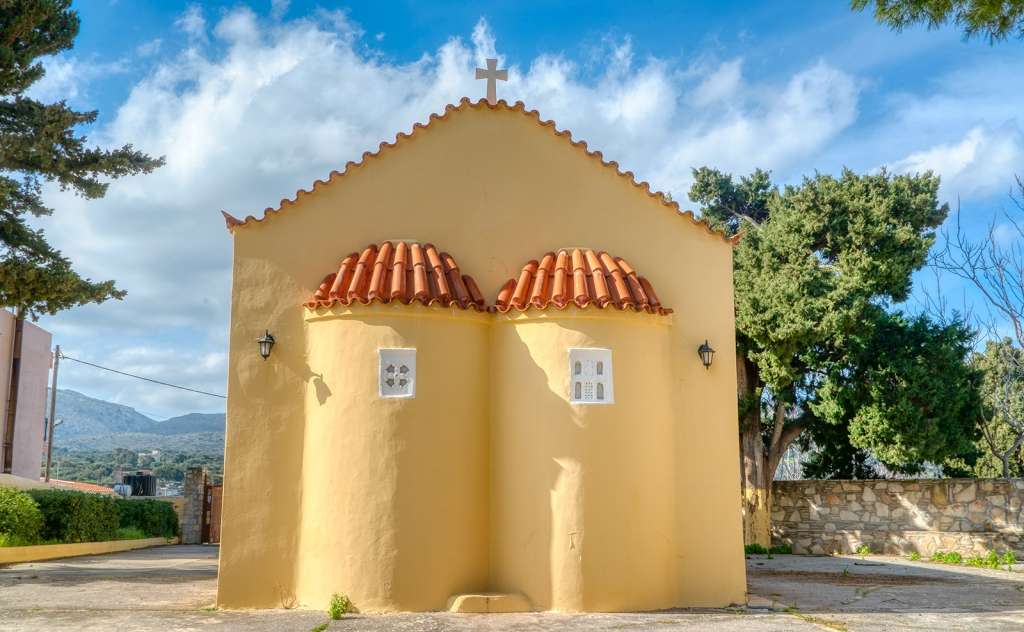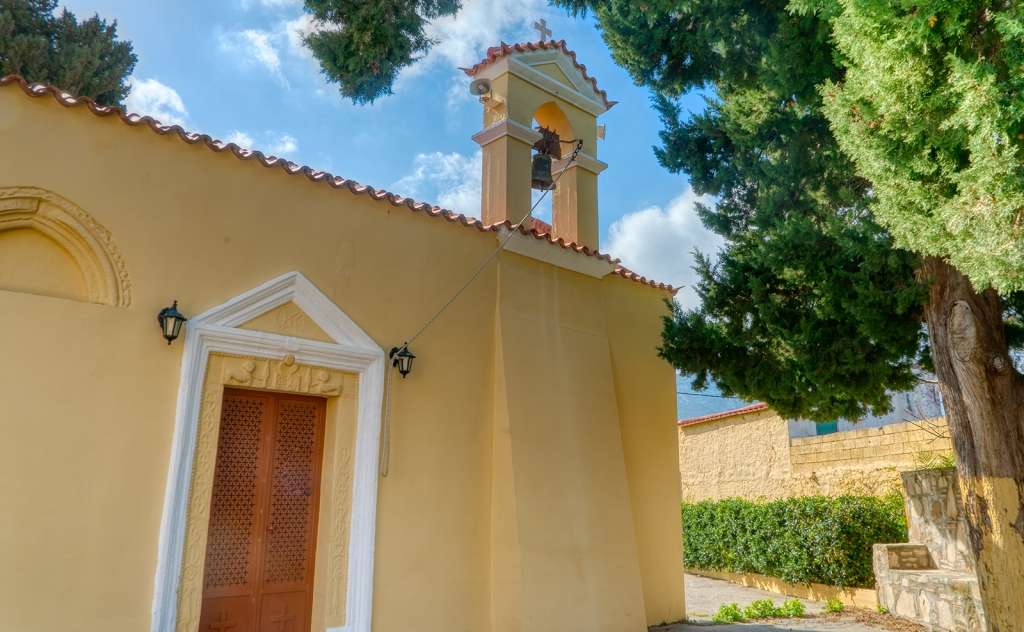Church of Agia Paraskevi and Agios Ioannis
The two-aisled church of (Saints) Agia Paraskevi and Agios Ioannis is located in the centre of the village of Moni, at the highest point. The village is 17 km from Heraklion and is built at an altitude of 242 meters.
It is a building of the 19th century, on the site of the oldest temple of the Venetian occupation, elements of which it preserves to this day. The church stands out for the characteristic decoration on the doors and the sanctuary. Specifically, at one of the side entrances of the church, there is a door that dates back to 1892, while near the entrance, a door section from the pre-existing church of the Venetian occupation is built (at a higher point).
The iconostasis inside the church is also interesting. The upper part is of different art and dates back to 1853. It was most likely part of the iconostasis that existed in the temple when it was burned by the Turks and added to the rest of the iconostasis built in 1873. The icons of the iconostasis date back to the 19th century. The despotic icon of Agia Paraskevi, made by a local hagiographer, stands out. The fact that it was made by a local hagiographer is inferred by the misspelling of Agia Paraskevi’s name, which is written with a “β” and not with “ευ” in Greek.
According to folklorist Georgios Stamatakis, the church is the result of two construction phases. The first one dates back to the Venetian occupation when it was built as a one-room vaulted church dedicated to Agia Paraskevi. This church functioned, throughout the Venetian and Turkish occupation, as the central parish church of Moni. During the revolution of the 19th century, the church was destroyed and rebuilt in 1892, incorporating parts of the pre-existing church, such as the part from the arch of the old door. Finally, according to testimonies of old inhabitants of the village, the ruins of a building (located a few meters from the church, belonged to a Byzantine church dedicated to Agios Ioannis.





